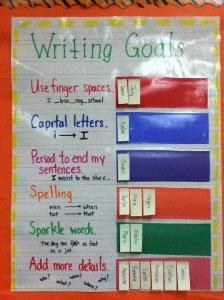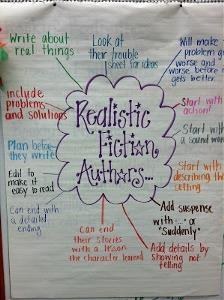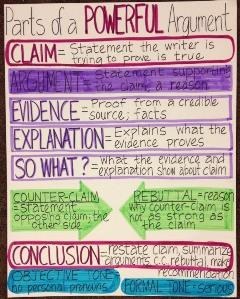One piece of advice that we give quite often to teachers is for them to make their instruction clearly visible to students. An excellent way to do this is by creating anchor charts, a verbal and visual strategy that significantly enhances student learning in any content area by giving students cues during the learning process. Anchor charts provide information to support a lesson that the teacher has taught, or to remind students of procedures, expectations, and routines in the classroom.

“Anchor Charts are artifacts of classroom learning communities. An anchor, by definition, is an object used to hold something firmly in place. Anchors are a source of stability and security. Thrown overboard, the anchor stables the boat holding it firmly in a desired location. Likewise, an Anchor Chart displayed in a classroom learning community anchors student thinking while offering a source of visual reference for continued support as the learner moves forward. Classrooms with rich anchor support leave little doubt about what a student is expected to learn and offer a “public trail” of thinking, a collection of learning.” (Excerpted from CoachingChronicles.blogspot.com)

Anchor charts, according to Wendy Seger, Cornerstone Literacy Fellow,
- Have a single focus.
- Are co-constructed with students.
- Have an organized appearance.
- Match learner’s developmental levels.
- Support ongoing learning.
- Are prominently displayed in the classroom.
- Provide scaffolded support to students.
They are used to:
- Define concepts, terms, or strategies.
- Review processes, strategies, or operations.
- Identify or summarize procedures or sequences.
- Problem solve.
- Predict connections between new and learned content.
- Reflect on what has been accomplished or what has been learned.
Anchor charts can be used with younger students to support their independence with the writing process, writing content, and mechanics.

In the upper grades, anchor charts can support students to increase the sophistication of their writing and in exploring different text types.


- Academic language
- Clarity
- One focus per chart
- Colorful
- Openly displayed
- Referred to frequently
According to Erin Angelo, eHow contributor, anchor charts are created together by the teacher and students during a lesson or class discussion. They are typically created on chart paper or an interactive white board and both the teacher and the students may assume responsibility for recording the ideas that the class generates.
Our suggested sequence for creating an anchor chart includes:
- State the concept and purpose in clearest and grade level appropriate terms.
- Guide classroom discussion through the concept.
- Take notes/record ideas on anchor chart.
- Review notes with students to ensure clarity of anchor chart.
- State how and when it will be used in the room.
To see more examples of anchor charts, or to learn more, click on the links below:
Short Article on Anchor Charts
Anchor Charts for Teaching Writing
Anchor Charts for Close Reading


Help Wanted!
In order to highlight some of the wonderful work going on in schools, we are asking for writing success stories and samples of students writing to showcase in upcoming newsletters. Please contact us if you would like to be included in one of our newsletters.